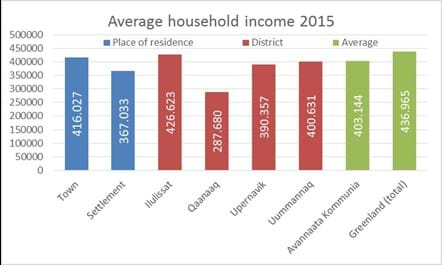Employment
From 2010 up to 2014, there has been a decline in average employment from about 9,150 to about 8,700. However, employment grew again in 2015, to an average of just under 8,900 employed.
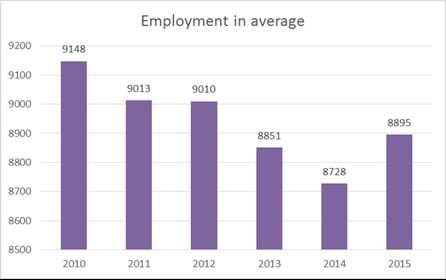
By districts found almost half (48%) of those employed in Ilulissat, while Upernavik and Uummannaq each has nearly a quarter of the employed. Qaanaaq clearly has the smallest share of employed as it occupies only 6% of the employed.
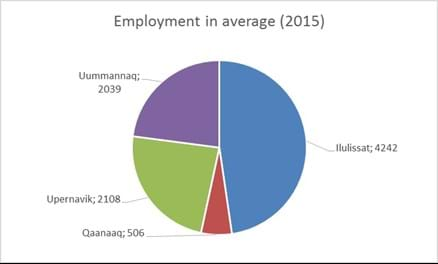
The unemployment rate for Avannaata Kommunia was 9.1% in 2015, which is the same as for Greenland as a whole. There are large differences in unemployment rates between the four districts. Ilulissat and Uummannaq have the lowest unemployment rates (about 7.5% in 2015), Upernavik is slightly higher (10.2% in 2015) while Qaanaaq has a significantly higher unemployment rate (21.6% in 2015).
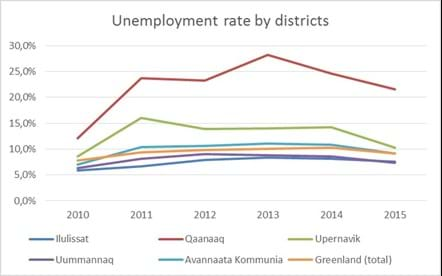
Branch Division
The two largest industry groups in Avannaata Kommunia are Public administration and service (38%) as well as Fishing, hunting and agriculture (31%).
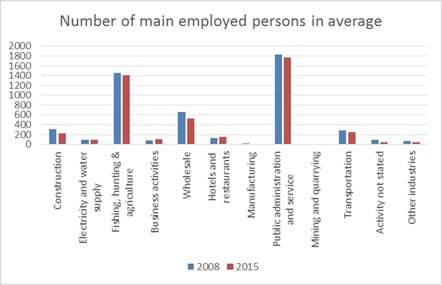
Compared to the national average, Avannaata Kommunia has an especially large segment of employment in the Fishing, hunting and agriculture group.
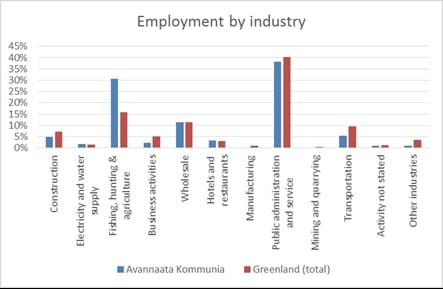
Ilulissat, as the Municipality's main city, has many people employed in public administration and service, but also in Fishing, hunting and agriculture. Fishing, hunting and agriculture constitute the largest occupational group in Upernavik and Uummannaq while Qaanaaq has the most employed in Public Administration and Service, primarily due to the generally low number of employees in the district.
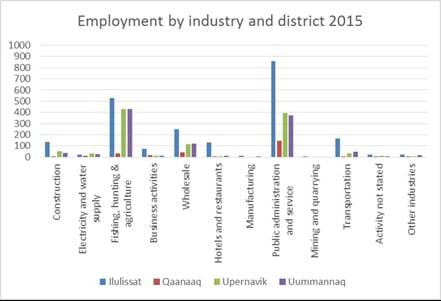
Income
The average household income in Avannaata Kommunia was approximately 403,000 kroner in 2015, which is approximately 8% lower than the national average. The income level in the municipality has increased at the same rate as the nationwide development since 2008.
Household income is generally higher in towns than in settlements. At district level, the household income is highest in Ilulissat, while Uummannaq and Upernavik are slightly below the municipal average and Qaanaaq has the significantly lowest income level among the four districts.
